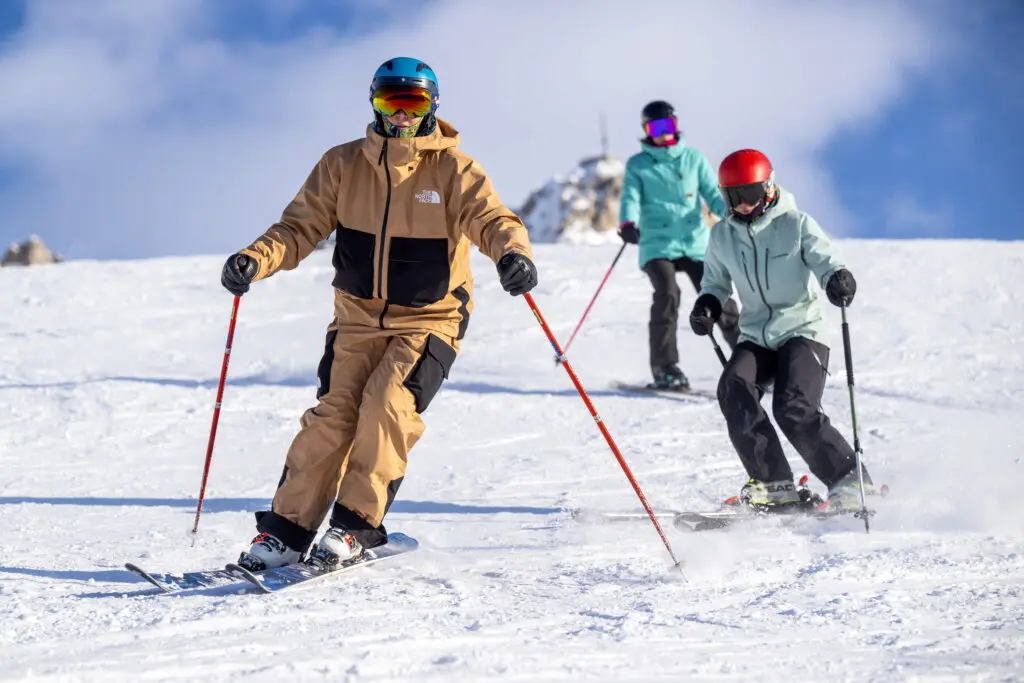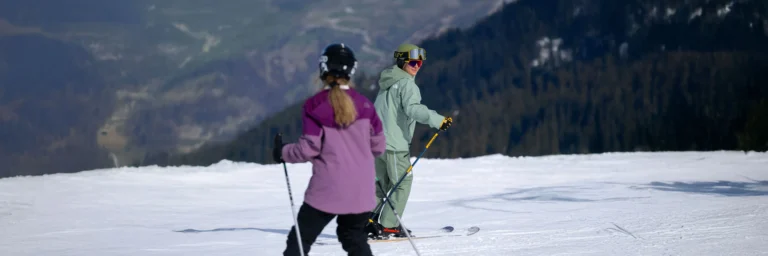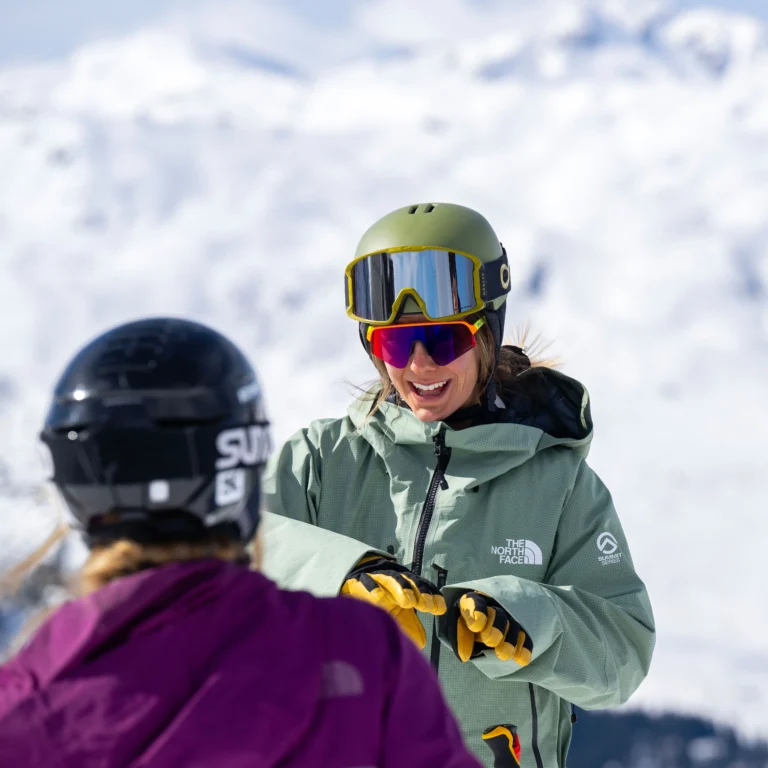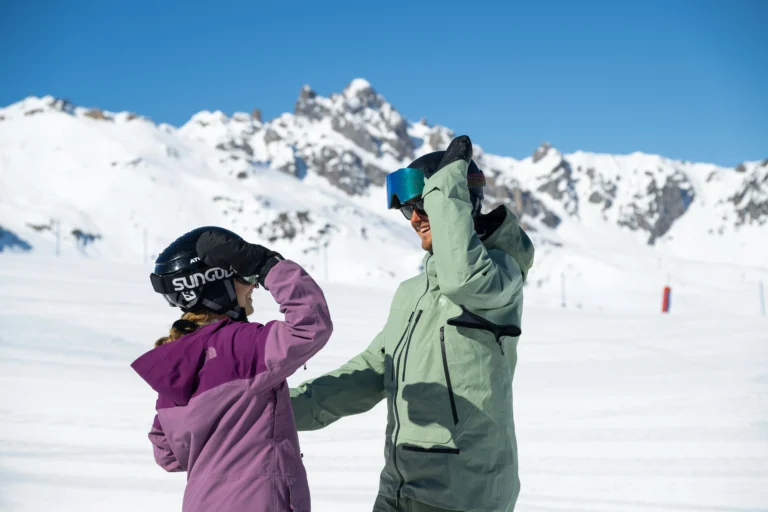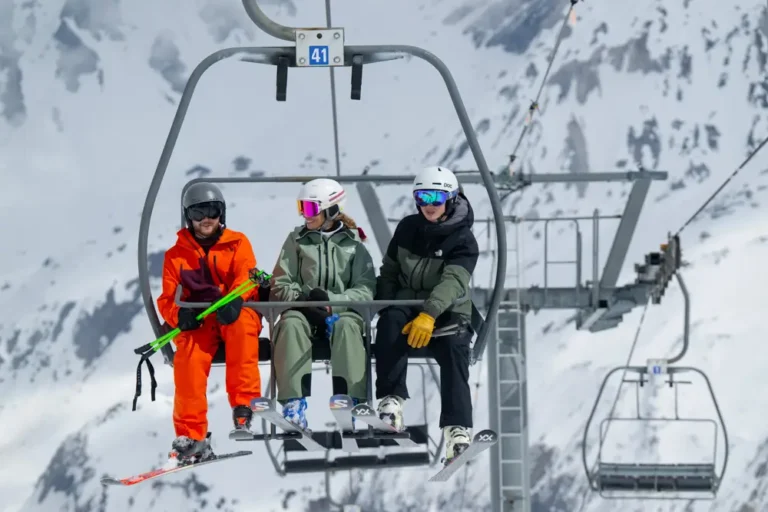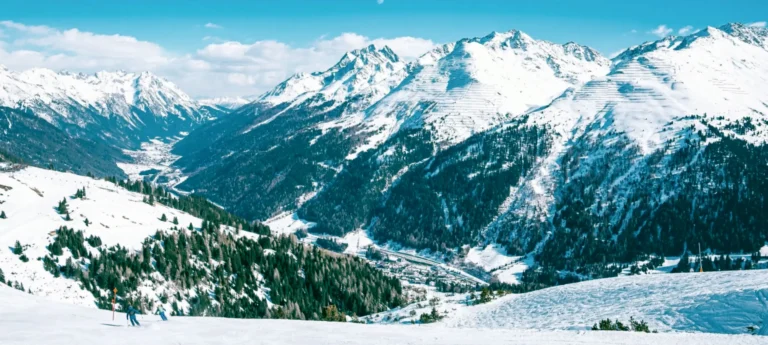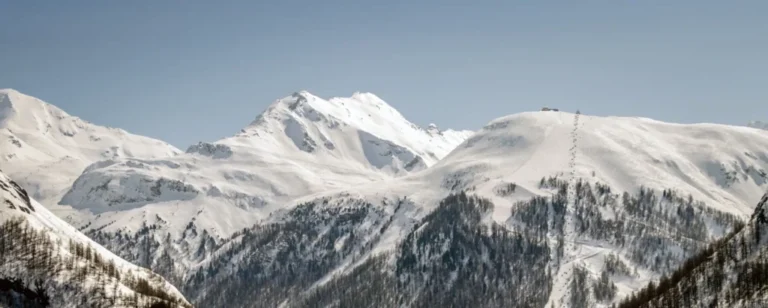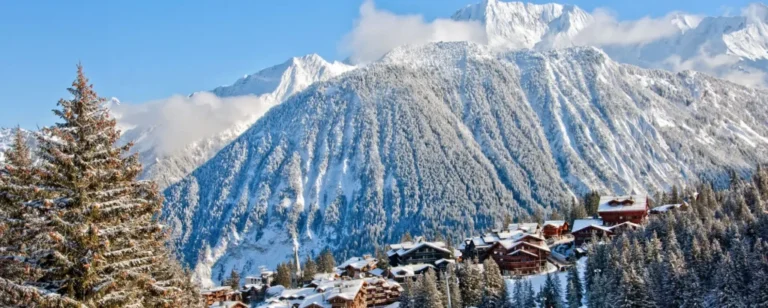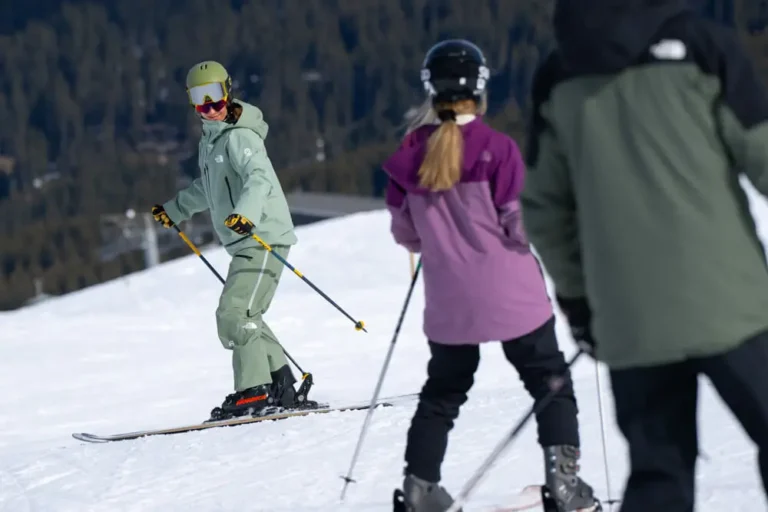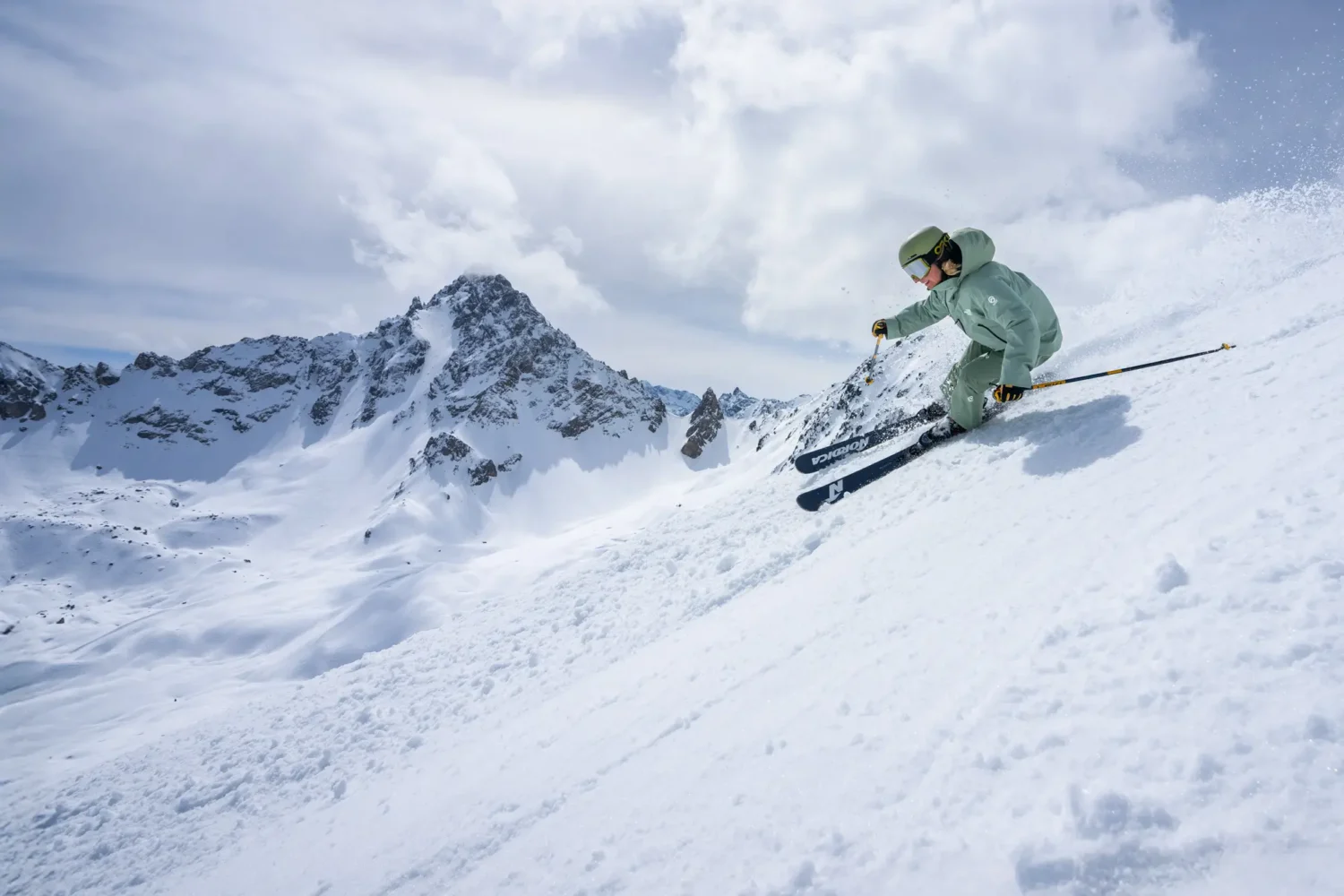A Day in the Life as a Ski Instructor: What No One Tells You
Early Morning Starts and Mountain Commutes
As a ski instructor, I start my day around 07:00, ensuring I have time for my first morning lesson. First things first: showering. No one wants to ski with or near you if you smell bad. Once clean, dry, and in uniform, I ensure that I have everything that I need.
Time isn’t a luxury in the morning, and we can’t afford to go home to pick up forgotten gloves or a lift pass. I always go through a mental checklist, starting at my feet and working up my body, saying everything I need, and touching it with my hands to check that I have it. It may look like a special rendition of the Macarena, but it works.
I then give myself plenty of time to get to the bus stop. Running for a bus in ski boots isn’t comfortable and doesn’t look cool either. I always aim for a bus that has a few backup buses in case one decides not to stop for me.
Weather Conditions You’ll Face (And Learn to Love)
You’ll find yourself working through blizzards, whiteouts, and the occasional bluebird day, all of which become part of the job’s charm.
The day before a lesson, I always check the weather conditions. Checking the weather helps me choose how many layers to wear and which goggles to wear. It’s hard to give feedback if you can’t see the guest, which is a key part of working as a ski instructor.
Checking the weather is also important for safety. Pay close attention to avalanche risk, wind speed, visibility, and temperature. These will help you plan a safe lesson.
The Physical Demands of Teaching on Snow
Physical demands vary massively depending on who you’re teaching. You’ll get different types of fatigue from having your skills tested off-piste with advanced guests than you’ll from teaching kids. These groups will test both mental and physical fatigue from the added responsibility of children and from having to walk uphill to help them out.
Despite this, the real physical demands come not from any one day of teaching but the cumulative buildup of fatigue from months of near-continuous skiing, so it’s always a great idea to have a rest day where you can.
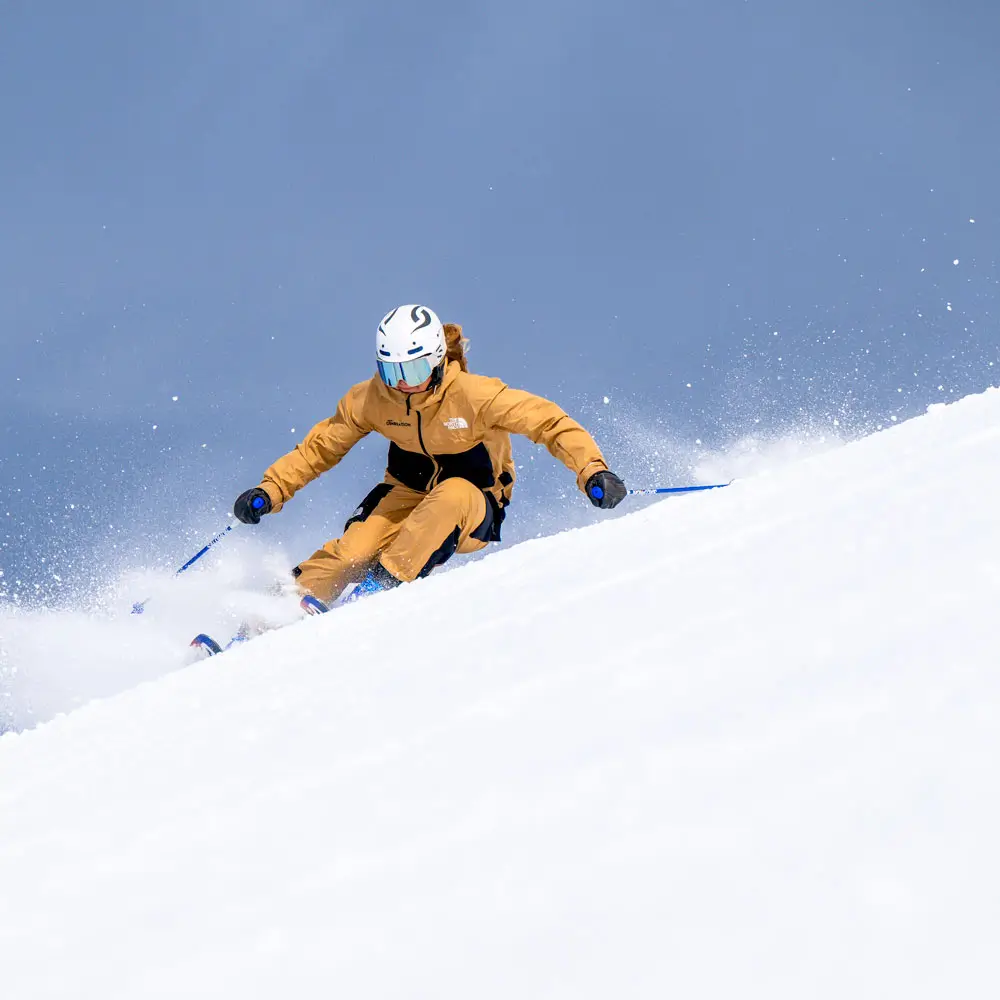
A Day in the Life of a Ski Instructor
Morning Briefings
My guest briefing tells me things like how old the guest is, how much experience they have, their ability and if there were any special lesson requests.
From this, I would choose my skis and poles, and if I were going off-piste, I’d bring my avalanche equipment (transceiver, shovel, and probe).
Lesson Assignments and Client Interactions
About 15/20 minutes before the lesson start time, I am ready to go. If my guests turn up early, we head straight up the mountain and miss any queues. Before we head off, I like to introduce myself and try to get to know the guests.
Getting good at this has set me up for a future of successful speed dating.
It’s important that guests feel that they know you and trust you from the get-go. This is especially true if they’re nervous skiers or new to the sport.
At this point, I also find out what they want to achieve together, if there is anything they want to avoid doing, and if they have any other concerns regarding their equipment or ski gear.
Lunch Breaks and Afternoon Sessions
If we were skiing with a guest for a whole day, we might go to lunch with them. Some guests are very generous and will treat you to lunch at a lovely mountain-top restaurant. This would be far superior to my typical lunch, waiting for me down the mountain.
Depending on how hard we had skied that morning and how late we had lunch, we might ski a handful of runs after lunch. I would try not to make the end of the day too intense. By then, fatigue may be setting in, and the snow can get chopped up or bumpy.
Who You’ll Be Teaching as a Ski Instructor
You can teach a wide range of people, from children to grandparents, groups of 10 people or individuals, and experts to beginners.
This variety of people brings a plethora of goals, ambitions, and fears. It’s always a great idea to remain flexible about what you plan to do.
Depending on your ski school, you’ll be briefed on who you’ll be skiing with before your lesson, so you can plan where you want to go. In some cases, you’ll only find out when you meet them.
From here, we head to the most suitable place for them. I always aim to make our first run together super relaxed. Even experienced skiers who haven’t skied since last year might need to find their feet again.
Working with Beginner Skiers and Kids
Beginner skiers and kids will need a helping hand with straightforward things from someone who’s been skiing before. When teaching adult beginners, you’ll have to be careful not to come across as patronising, as simple things will not be obvious.
Teaching Adults vs Children: The Key Differences
Adults often overthink, while children usually have no fear. Both come with unique challenges. Teaching adults can be more technical, while ski lessons for kids are all about games and fun. There are a few more key differences when teaching children or adults. A great example of this is children’s lower centre of gravity. This means they can get away with skiing in ways that adults can’t.
Children are also usually more confident and less fazed by a fall. When teaching adults, you may have to work more on confidence-building and can go into literal details. Whereas with children, particularly younger ones, you’ll have to focus on keeping them entertained instead and explain things in more imaginative ways.
Children will also be less likely to communicate if they’re too cold, so you’ll need to watch out for this.
Private Lessons vs Group Instruction
Private lessons mean a tailored approach to skiing. We’ll tailor the lesson exactly to them. If they want something completely different, we can do it, as long as it’s safe. For instance, if they want to focus entirely on bumps skiing, we’ll do that.
Like private lessons, group lessons provide a brief before the lesson. The main difference between the two is that there is much less deviation from the initial lesson plan during a group lesson. You’ll have to do runs and drills that are best for everyone in the group.
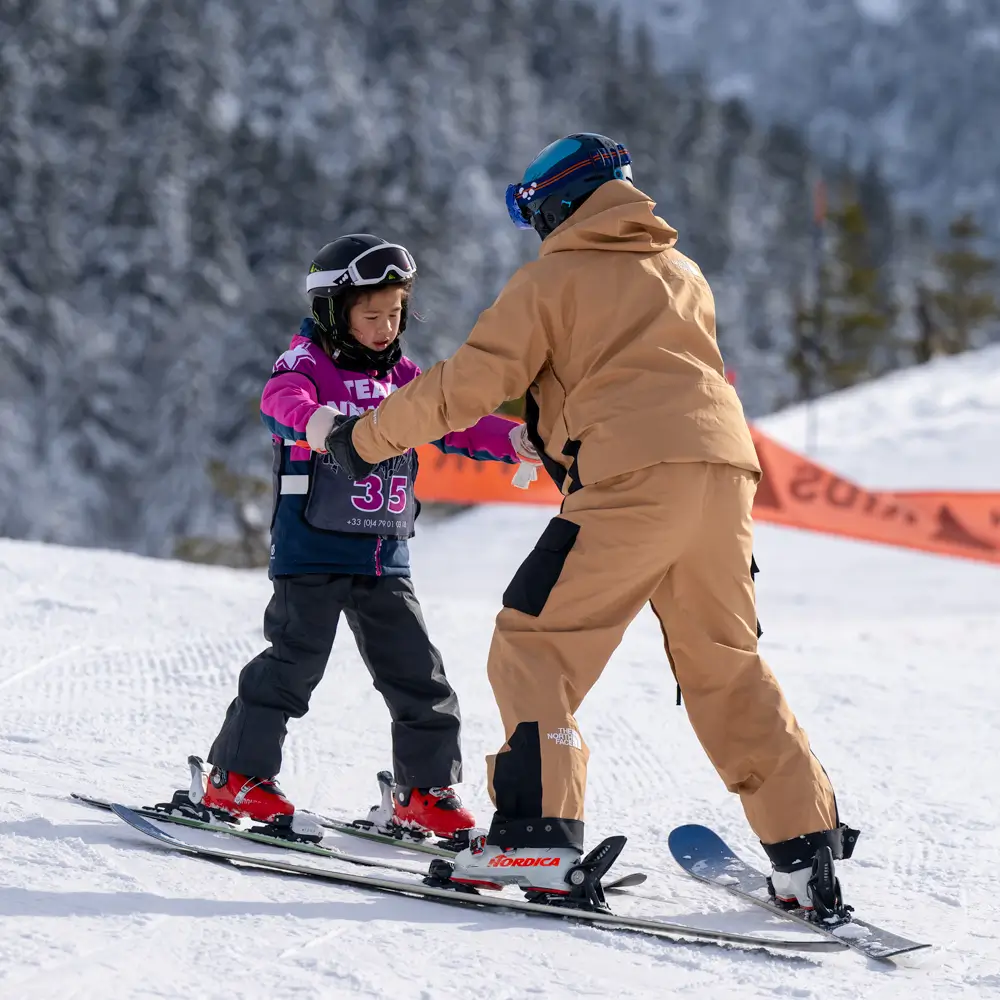
Where to Work as a Ski Instructor
Best Ski Resorts for New Instructors
The best ski resort depends on who you ask, but there are things to consider before deciding. Firstly, certain resorts will not enable you to teach with a BASI Level 1 qualification. If you want to do less training and more teaching, look to qualify in a country where you can work as a level 1 ski instructor, such as Canada. If you’re willing to train longer before qualifying, you’ll have the chance to earn more money and work in more countries.
Finding Jobs and Housing at Ski Resorts
Start early, there’s always high demand, particularly for housing in resorts. You’ll want to sort your job first, then your accommodation. The last thing you want is to have the rental payments of an expensive apartment to pay without having a job first. If you’re worried about not having anywhere to live but have secured a job, worst case, you’ll likely just end up living further down the mountain. Facebook groups, resort websites, and instructor networks are great for accommodation hunting.
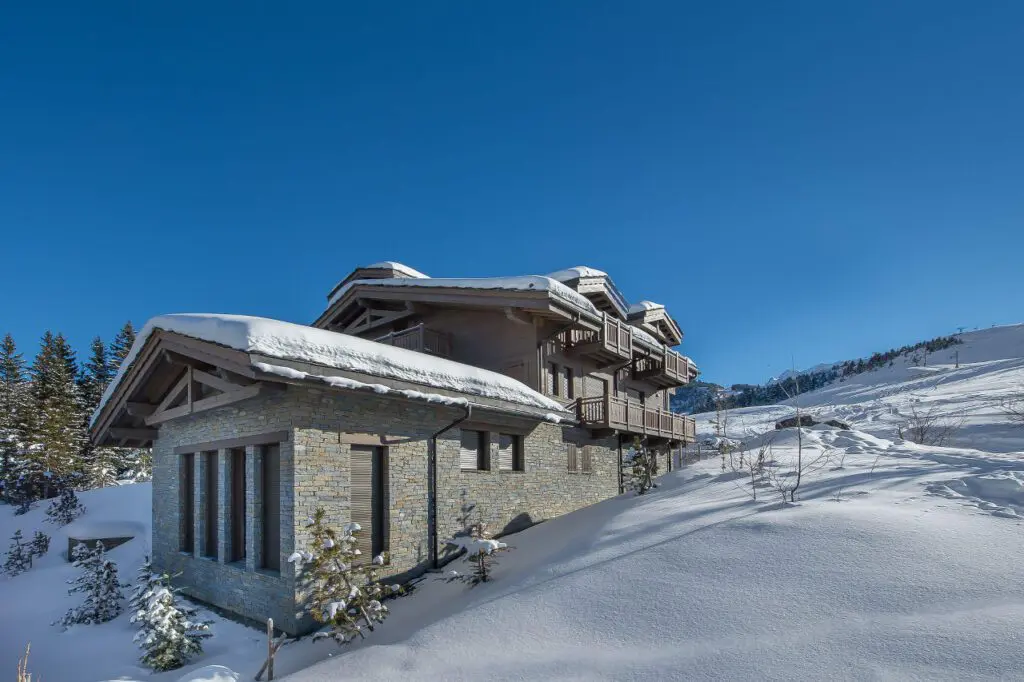
The Social Side of Instructor Life
Building Relationships with Fellow Instructors
Working a season together means you’ll get to know your coworkers well. You’ll spend time working, socialising and training together. You’ll find many like-minded people even if you go to a resort without knowing anyone.
Living in Ski Towns and Employee Housing
Living in ski towns can be great fun. Most people are there for a holiday. As an instructor, you’ll live further out than the typical holidaymaker. This isn’t the end of the world, as it means that rent prices are far more affordable, and there is often a fantastic community of ski instructors and seasonal workers.
Balancing Work and Personal Skiing Time
Your mornings will be the busiest time, with more free time in the afternoons. This gives you a brilliant opportunity to ski. Just be sure not to overexert yourself. Fatigue builds up over the season. Ensure you take the time to rest when you can.
Equipment and Gear for Ski Instructors
Essential Gear You’ll Need to Invest In
You’ll spend most of your time on the slopes, so you’re better off being comfortable in your gear. As an instructor, you’ll have a ski school uniform. Aside from this, you’ll need additional ski gear for your free skiing to minimise the wear and tear on your instructor uniform. It’s a great idea to purchase high-quality socks, gloves, thermals, a helmet, and boots. You’ll spend most of your time wearing these, so don’t be afraid to buy quality.
Pro Deals and Employee Discounts
Life as a ski instructor is great, and as ski and snowboard instructors, we often get great discounts on ski gear and local resort bars. The higher your qualification level, the greater the discount you may receive on gear. This is another great incentive, alongside receiving better pay.
Teaching Skis vs Personal Skis
As instructors, many of us have more than one pair of skis. I’d usually choose what I use based on who I’m skiing with. If I’m intermediate or lower, a soft piste ski is best. Using these skis will also minimise the wear and tear on your favourite pair. A race-inspired piste ski or an off-piste ski is best for advanced lessons, depending on what you’re doing.
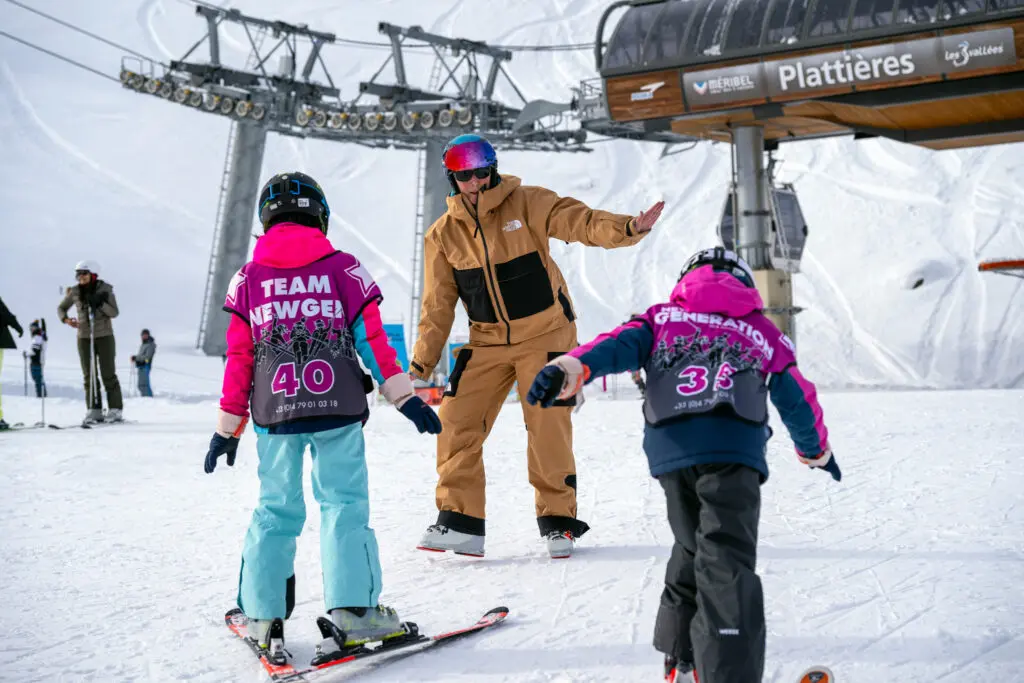
Career Progression for Ski Instructors
Moving Up from Rookie to Senior Instructor and Building a Long-Term Career in Snow Sports
Throughout your career and life as a ski instructor, you can move up to senior roles. These include training new instructors, managing lesson programs, or moving into ski school management, which can be earned through experience, ski school loyalty, or higher-level qualifications.
Seasonal Work vs Full-Time Career Options
If you’ve got the right qualifications, you can choose the time you want to work. Some people teach only part-time during peak weeks as more of a hobby. Others will do back-to-back northern and southern hemisphere seasons to instruct as much as possible.
A Day Well Spent
After hanging up my boots and stowing away my gear, I can’t help but smile as I reflect on another incredible day on the mountain. From nervous first-timers taking their maiden voyage down the bunny hill to advanced skiers perfecting their carving technique, each lesson reminded me why I fell in love with this profession.
There’s something magical about watching someone’s face light up when they finally link their first turns or conquer a run that once seemed impossible. Sure, my legs are tired and my voice is a bit hoarse from shouting encouragement over the wind, but as I watch the last skiers make their way down the mountain in the golden afternoon light, I’m already looking forward to tomorrow. After all, every day on the mountain is a good day, and getting paid to share that joy with others? Well, that’s just the powder on top.
If you’re reading this and thinking about becoming a ski instructor yourself, it’s more accessible than you might imagine.
Want to Experience Life as a Ski Instructor Yourself?
Here at Ski New Generation, we offer ski instructor courses that cover everything from basic teaching methodology to safety protocols and mountain awareness. We offer a variety of courses for both skiing and snowboarding, including off-piste weeks, ski touring, and split-boarding. Courses are designed to cater to different skill levels, from intermediate to advanced.
You don’t need to be an Olympic-level skier – you just need solid intermediate skills, patience, and a genuine enthusiasm for helping others discover the joy of skiing. The best part? You’ll continue learning and improving your own skiing while building a community of like-minded mountain lovers. Whether you’re looking for a career change, a seasonal job, or just want to give back to the sport that’s given you so much, there’s always room for passionate instructors on the mountain. Get in touch today and start your journey with us.
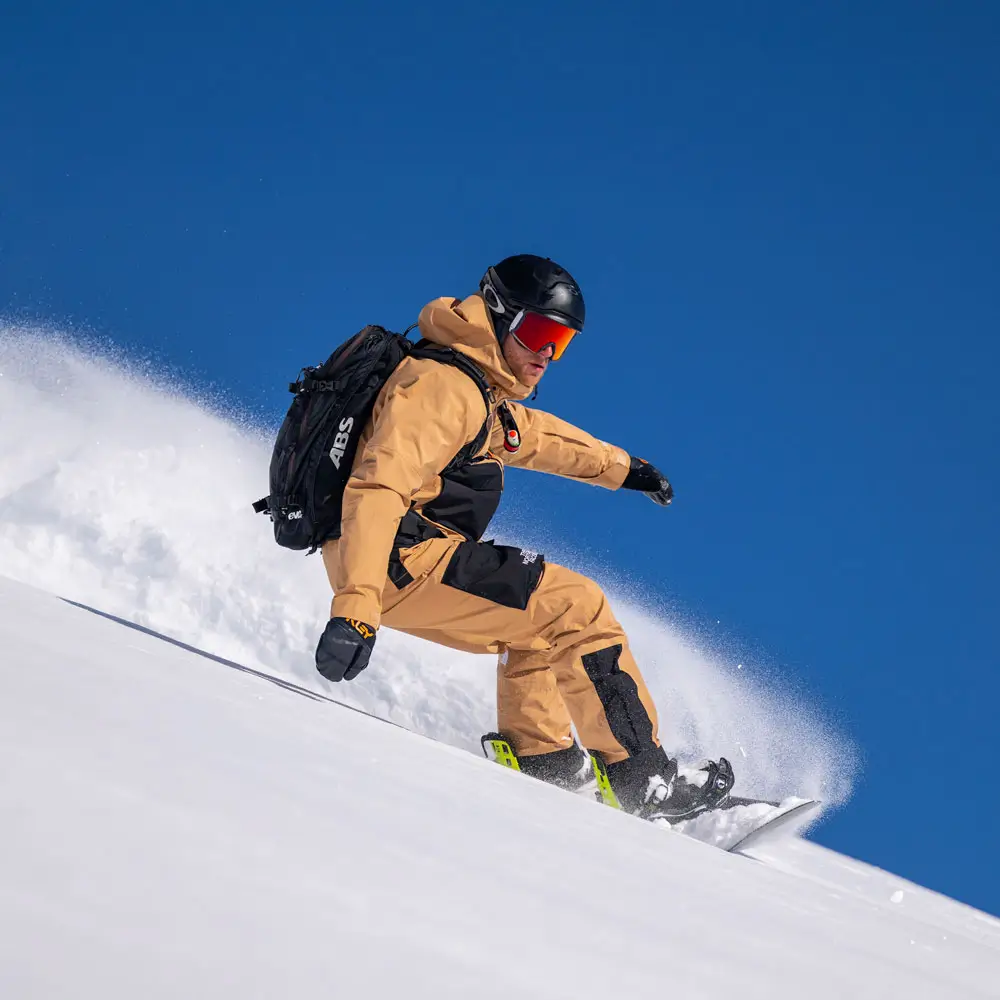
Life as a Ski Instructor FAQs
Can you make a living as a ski instructor?
Making a full-time living as a ski instructor can be challenging but certainly possible, depending on your circumstances and approach. Many instructors supplement their income by working summers at southern hemisphere resorts, teaching at indoor snow centres, or taking on other seasonal work like mountain biking instruction or hospitality roles. Full-time instructors often progress to senior instructor roles, become ski school supervisors, or specialise in areas like racing or off-piste instruction, which command higher rates. While it may not make you wealthy, the lifestyle benefits and job satisfaction often compensate for the modest income.
How many hours a day does a ski instructor work?
A typical ski instructor works 6-8 hours per day during peak season, though this varies significantly based on the resort and demand. Your day might include 4-6 hours of actual teaching time, plus preparation, equipment checks, and administrative tasks. Weekend and holiday periods are usually the busiest, while midweek can be quieter. Many instructors appreciate the flexible schedule – you might have a full day of back-to-back lessons one day, then only a couple of lessons the next, giving you time to enjoy the mountain yourself.
Am I too old to be a ski instructor?
You’re never too old to become a ski instructor! While the industry does attract many young seasonal workers, there’s huge value in mature instructors who bring life experience, patience, and often better communication skills to their teaching. Many resorts actively seek older instructors, particularly for adult lessons and specialised programs. The physical demands are manageable if you’re in reasonable shape and love skiing. Some of the most respected and successful instructors are in their 50s, 60s, and beyond – your enthusiasm and passion for skiing matter far more than your age
What’s the most challenging part of life as a ski instructor?
The biggest challenge is often dealing with difficult weather conditions – teaching in heavy snow, high winds, or extremely cold temperatures requires extra patience and safety awareness. Managing groups with mixed abilities can also be tricky, especially when you have one nervous beginner holding back more confident skiers.
How do you handle scared or reluctant students?
Working with frightened students is a huge part of the job and requires patience, empathy, and creativity. You learn to read body language, break down skills into tiny steps, and use positive reinforcement constantly. Sometimes it means spending an entire lesson just getting someone comfortable putting on skis, and that’s perfectly fine. The breakthrough moments – when someone finally makes their first turn or conquers their fear – are some of the most satisfying experiences you’ll have as an instructor.
Do ski instructors get to ski for fun during work?
While you’re technically skiing all day, it’s quite different from recreational skiing. However, most instructors do get breaks between lessons and often have some free time to enjoy a few runs. Many resorts also offer staff ski time before or after operating hours, and instructors frequently ski together during lunch breaks or after work. The bonus is that you’re constantly improving your technique through teaching, and you get to explore parts of the mountain you might not normally visit.
